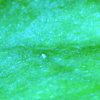leaves cupped up on beans, dahlias, tomatoes
reebiemac
11 years ago
Related Stories

DECLUTTERINGDownsizing Help: Choosing What Furniture to Leave Behind
What to take, what to buy, how to make your favorite furniture fit ... get some answers from a homeowner who scaled way down
Full Story
SUMMER FRUITS AND VEGETABLESSummer Crops: How to Grow Beans
Grow your own beans for amazing variety and healthy, convenient produce all summer
Full Story
KITCHEN DESIGNWake Up Your Kitchen With a Deluxe Coffee Center
Get all the ingredients for the perfect morning jump-start with a station dedicated to your cup of joe
Full Story
FALL AND THANKSGIVINGSimple Pleasures: A Cozy Home in Cold Weather
Stock up on these treats and essentials to make even blustery days and snowed-in time feel special
Full Story
HEALTHY HOME12 Ways to Set Up Your Kitchen for Healthy Eating
Making smart food choices is easier when your kitchen is part of your support team
Full Story
KITCHEN DESIGNSimple Pleasures: Wake Up and Smell the Coffee
Slugging down any old sludge while pulling on socks is no way to start the day. Learn to brew amazing java and savor the experience here
Full Story
GARDENING GUIDESEssential Watering Tips for Your Edible Garden
To give your edible plants just what they need, check out these guidelines for how, when and how much to water
Full Story
FALL GARDENING7 Reasons Not to Clean Up Your Fall Garden
Before you pluck and rake, consider wildlife, the health of your plants and your own right to relax
Full Story
GARDENING GUIDESOh, Deer! 10 Native Flowers That Stand Up to the Herds
Keeping a garden amid hungry deer can be hard, but these plants should fare well
Full Story
FARM YOUR YARD9 Ways to Change Up Your Vegetable Garden for the Coming Season
Try something new for edible plantings that are more productive than ever
Full Story







steven1032
jean001a
Related Professionals
Grand Haven Landscape Architects & Landscape Designers · Signal Hill Landscape Architects & Landscape Designers · Mount Wilson Landscape Architects & Landscape Designers · Peabody Landscape Contractors · Pelham Landscape Contractors · Bowie Landscape Contractors · Federal Way Landscape Contractors · Fort Mill Landscape Contractors · Medford Landscape Contractors · North Richland Hills Landscape Contractors · South Lake Tahoe Landscape Contractors · Twin Falls Landscape Contractors · Woodbury Landscape Contractors · Oxon Hill Landscape Contractors · Immokalee Stone, Pavers & ConcretereebiemacOriginal Author
reebiemacOriginal Author
reebiemacOriginal Author
jean001a
jean001a
reebiemacOriginal Author
jean001a
steven1032
jean001a
reebiemacOriginal Author
jean001a
steven1032
steven1032
jean001a
reebiemacOriginal Author
ahscards
reebiemacOriginal Author
jean001a
steven1032
PSUhorty